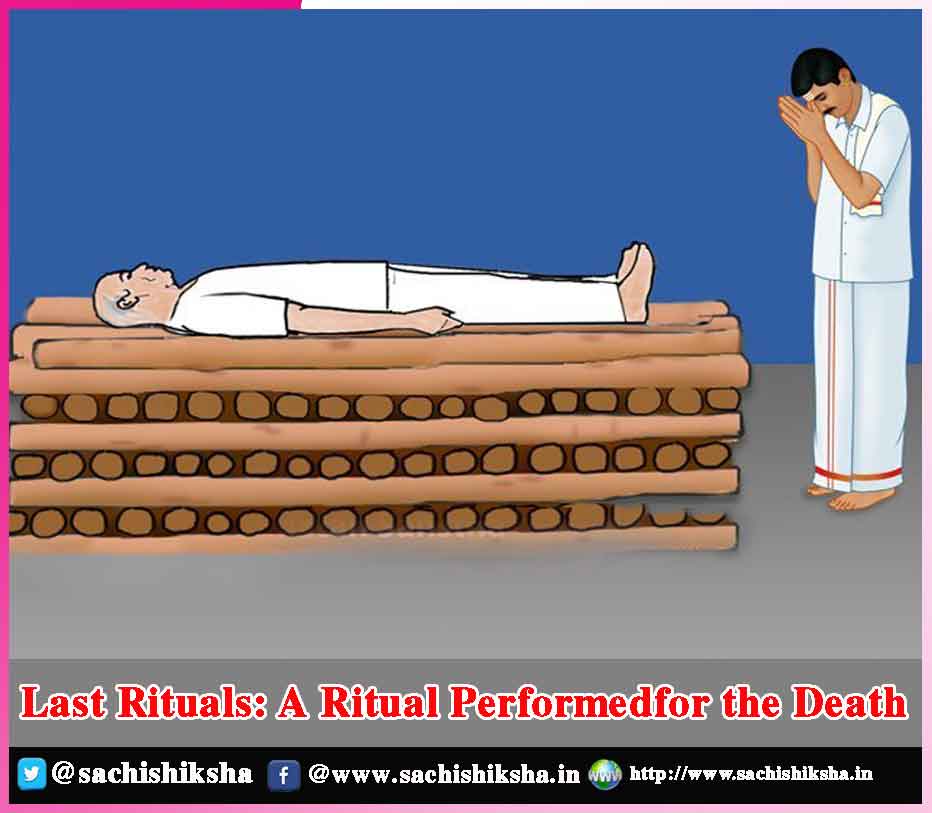Last Rituals: A Ritual Performedfor the Death
“Life is a song – sing it. Life is a game – play it. Life is a challenge – meet it. Life is a dream – realize it. Life is a sacrifice – offer it. Life is love – enjoy it.” ~Sai Baba
Death is universal, but different countries and cultures have unique ways to mourn the loss of their loved ones. Culture ingrains the beginning and end of life, often with longstanding practices that make up the ceremony of saying goodbye.
What is Death Ritual? Why do we perform it? When a loved one dies, we often lose our senses and draw a blank line when it comes to how to let that person go in peace. The rituals often guide us through this. Family and friends of the loved one follow mourning practices and hold different events to honor the lives of those who left us all behind.
Also Read:
- A Death Like Deed Diverted | Experiences of Devotees
- Pain of Being Alone
- Anti-Tobacco Day
- Importance of Mental Health
Civilizations follow specific rituals and practices, often centering on burial or cremation, grief and mourning, and other ceremonies. Ceremonies often happen from a traditional or family perspective, while many death rituals are associated with religious practices. More and more families have blended traditions or opt for alternative ways of celebrating a life. But it doesn’t matter whichever funeral rituals are followed or created, they serve the same purpose and that is to provide comfort for the family in their time of loss, creating an opportunity to find purpose and healing in their grief.
Whether the grief ritual was a public mourning event, in which friends, family, and strangers alike attended the event to wail and mourn as one, or if the ritual were a dress code and a family – imposed curfew followed by regular visits from clergy and community to chant the passed soul to next realm, one thing is abundantly clear about grief rituals and death ceremonies: grievers are rarely alone and it’s kind of a relief to know that.
From the New Orleans jazz funeral and South Korean burial beads to sky burial in Mongolia and Tibet and Balinese cremation ceremonies, these rituals and ceremonies are often associated with religion as communities follow the traditionally prescribes movements in the wake of a loss of life.
Death rituals are nearly non-existent in the United States, Canada, and Europe, but this wasn’t always the case. In the United States, there is a long history of what is often called the privatization of grief. Many mourners experience grief as a kind of isolation and nobody can really blame them for that. The mourners don’t want the people who are insignificant to the passed one to poke their nose in their business. They just want to be left alone in peace. More recently, grief has even moved to the realm of self – help, where the loss of the loved one can be used, experts say, as a forward – propelling event in your own life.
It’s still a question in some curious minds that how the West lost its death rituals. Many researchers speculated that the plague was the starting point for a decline in death rituals in the West. So many died that it was impossible for death rituals and last rites to be given to all who needed. In addition, no one knew the exact cause of plague, and people were wary to help or tend to the fallen bodies in fear of getting the plague themselves.
This was counter to the traditions at the time, in which families bathed the bodies at home, after they passed, laid them out in the bed, invited folks over, held religious ceremonies, and planned the burials of their loved ones with local priest in the church’s cemetery. But there was no room at church graveyards for all the deaths during the plague and many bodies were discarded in ditches or the mass graves. It’s a very agonizing thing that people had to go through all that. That’s how the declining in death rituals started in the West.
In Indonesia, people believed that death is not a sudden process but a gradual journey. The body stays with the family after what others would call death, but people in Indonesia, who are known as Torajans, see it as a form of sickness, and they continue to care for and talk to their loved ones. The funeral is huge and is taken pace weeks or months later to allow the family to raise the necessary funds and gather everyone together. The mummified body is then placed in a stone grave or cave, or their coffin is hung from a cliff. A very unique way to let the person move on the afterlife.
In Japan, family members use chopsticks to pick up the bones of their loved ones after cremation and place them in an urn. The food bones go in first and the head last. This is one of several stages, following a wake around the open casket, the giving of a Buddhist name to the deceased and the funeral; The Japanese have family graves with spaces for several urns. Again a very much unique process to send the person to find peace.
People in Accra region create elaborate coffins that are also considered works of art. These originated with Ga people, who believe that life carry on in another place after death the same way it did before. So, the coffins are made to represent something the person loved or that symbolizes his life, such as a fish or even a chili pepper, and to show person’s importance to others.
Buddhists in Tibet believe in the transmigration of the soul and therefore that once the person has died, the body is an empty vessel. In sky burial, the body is cut into pieces and placed in an exposed place where animals, such as vultures, can consume it. This is considered an act of generosity, allowing the living to benefit from the body once it is no longer needed.
All these death ritual processes show that not everyone follows the burial ceremonies or the cremation ceremonies. There are several processes in which the living can say their final goodbyes to their loved ones.















































